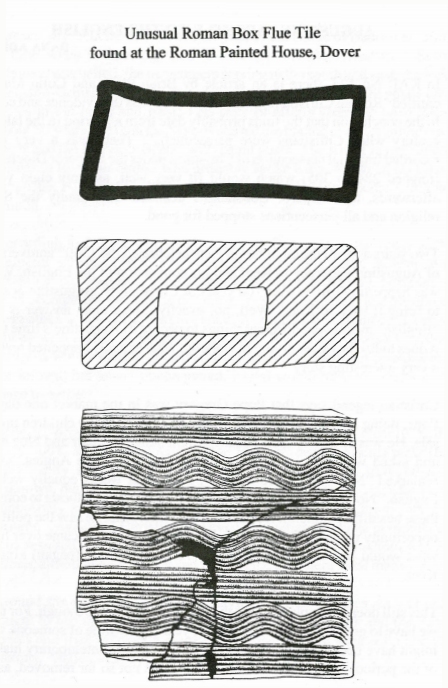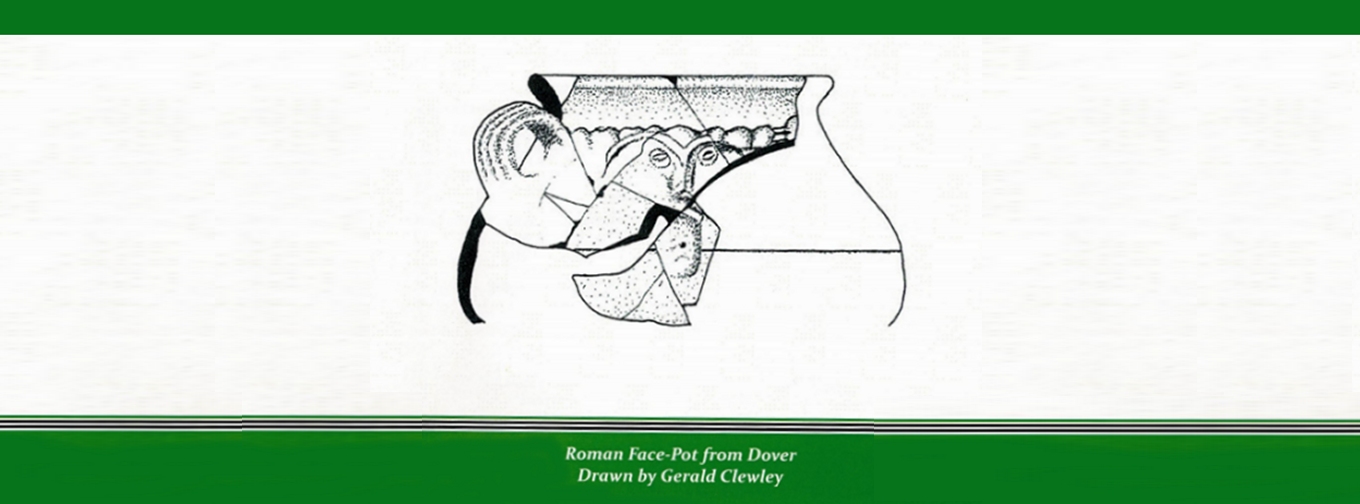AN UNUSUAL ROMAN BOX-FLUE TILE FROM DOVER
GERALD B CLEWLEY
During the excavations carried out by the Kent Archaeological Rescue Team, under the direction of Brian Philp on the "Bingo Hall Site", Dover in 1976 an unusual hollow rectangular box flue tile was discovered. This came from a demolition layer in the hypocaust system of a heated Roman building at the N.E. corner of the "Roman Painted House". This near complete example of a large box flue measured 29cm in length by 28cm in width, by 13cm in depth. It was decorated with combing on the upper and lower sides, which consisted of alternating wavy and horizontal lines the lapping showed that this was applied with a seven-toothed comb starting from the right and working across the face of the tile. The combing allowed mortar and plaster to adhere more easily to its surface.
Tiles of this nature are found in the construction of Roman bath-houses suites and also the heated rooms of villas. The hot air passed under the floor and then up vertical flues "tubuli" in the walls and corners of the room to the roofs, some vaulted. They were an integral part of a hypocaust system.
Box-flue tiles are known at several different sites in Britain with similar combing designs, but these tend to be smaller The box-flue tile from the Roman Painted House with the Bacchic Murals at Dover (Ref.1, p.100, Fig. 38, No 277) measured 41cm in length 14.7cm in width 10.5 and (No 278) 31.5in length by 16.5 in width. Other examples come from Fishbourne (Ref.2 1961-1969) and from Reculver (Ref.3, p.191, Nos.479 and 480).
References.
Ref. 1. The Roman House with Bacchic Murals at Dover (1989).
Ref. 2. Fishbourne Excavations (1971)
Ref. 3. The Excavation of the Roman Fort at Reculver, Kent (2005).


